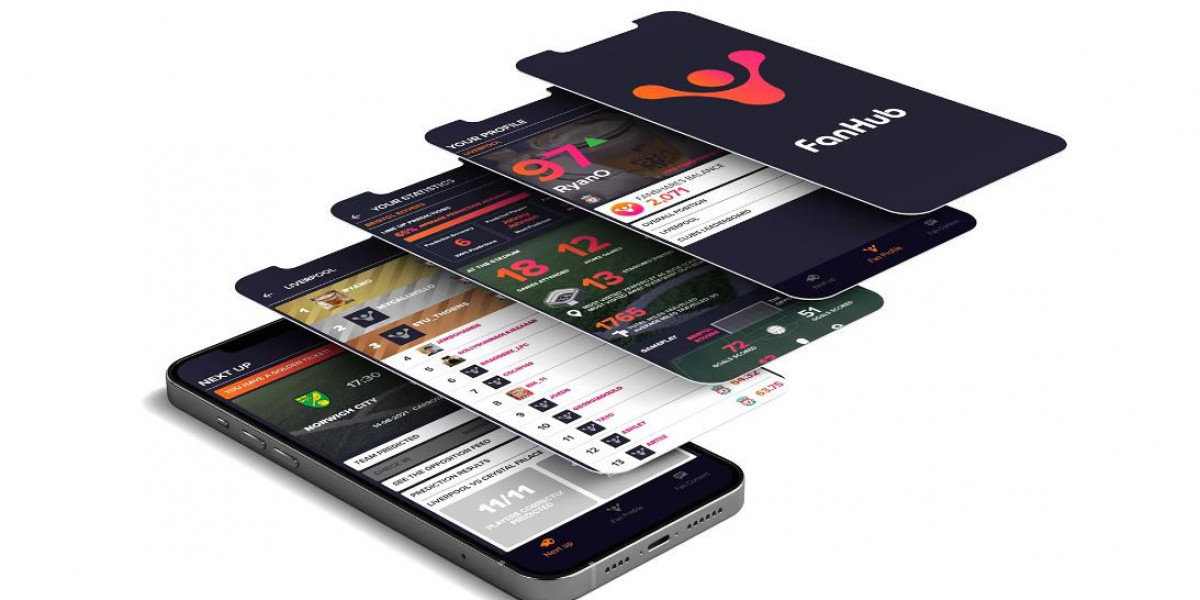In an increasingly digital world, accessibility in UI/UX design is no longer a luxury—it is a necessity. Accessibility ensures that everyone, including people with disabilities, can interact with digital products effectively. Designing for accessibility goes beyond compliance; it is about creating inclusive experiences that cater to a diverse audience.
From visual impairments and hearing loss to motor limitations and cognitive challenges, accessibility addresses the needs of real users in various situations. As more businesses invest in professional UI/UX designing, integrating accessibility from the start of the design process is becoming a best practice for creating user-friendly digital experiences.
This article explores the principles, techniques, and benefits of designing accessible user interfaces and experiences, and how organizations can deliver inclusive products by partnering with skilled professionals.
What is Accessibility in UI/UX Design?
Accessibility in UI/UX refers to the design of digital interfaces that can be used by as many people as possible, regardless of ability or disability. This includes making content understandable, navigable, and operable for users with different needs, such as:
Vision impairments (e.g., color blindness, low vision, blindness)
Hearing impairments
Mobility limitations (e.g., difficulty using a mouse or keyboard)
Cognitive disabilities (e.g., dyslexia, ADHD)
Accessible design ensures that digital experiences are inclusive, usable, and legally compliant. Many countries mandate accessibility standards, such as the Web Content Accessibility Guidelines (WCAG), making it essential for any professional UI/UX designing team to follow best practices.
Why Accessibility Matters in UI/UX
1. Inclusivity and Equal Access
Accessibility is about ensuring that everyone, including people with disabilities, can access information and services online. Inclusive design reflects a commitment to social responsibility and ethical product development.
2. Legal Compliance
Non-compliance with accessibility standards can result in lawsuits and legal challenges. Laws like the Americans with Disabilities Act (ADA) in the United States and similar regulations globally require digital accessibility.
3. Improved Usability
Accessible designs benefit all users. Clear navigation, readable text, and intuitive layouts improve the experience for everyone—not just people with disabilities.
4. Enhanced Brand Reputation
Companies that prioritize accessibility are seen as forward-thinking and socially conscious. It builds trust, improves brand image, and shows that a business values every customer.
5. Increased Market Reach
Over one billion people globally live with some form of disability. Designing accessible products opens your website or application to a much larger audience.
Key Principles of Accessible UI/UX Design
The WCAG outlines four primary principles of accessibility, commonly referred to as POUR:
1. Perceivable
Users must be able to perceive the information presented, regardless of their sensory abilities. This means offering alternatives for non-text content, such as:
Text alternatives for images (alt text)
Captions and transcripts for videos
High contrast between text and background
Resizable text without loss of content or functionality
2. Operable
Users must be able to navigate and use the interface effectively. Features supporting this include:
Keyboard navigation (no mouse required)
Avoidance of time-limited tasks or giving users control over timing
Clear, visible focus indicators
Logical tab order and skip navigation links
3. Understandable
The content and interface should be easy to comprehend and operate:
Use clear and concise language
Provide helpful instructions and error messages
Maintain consistency in design and navigation patterns
4. Robust
Content should be compatible with various user agents, including assistive technologies:
Use clean, semantic HTML
Ensure forms are properly labeled
Regularly test with screen readers and other assistive tools
Best Practices for Designing Accessible UI/UX
Creating an accessible digital product requires thoughtful planning and continuous testing. Below are actionable best practices that every professional UI/UX designing team should follow:
1. Design with Color Contrast in Mind
Ensure there is sufficient contrast between text and background. The recommended contrast ratio is at least 4.5:1 for normal text and 3:1 for large text. Avoid using color as the only means of conveying information.
2. Use Scalable and Legible Fonts
Text should be easily readable and scalable. Stick to sans-serif fonts like Arial or Helvetica and allow users to resize text up to 200% without breaking the layout.
3. Implement Accessible Navigation
Create intuitive, keyboard-accessible navigation. Ensure menus, links, and interactive components are operable via the Tab, Enter, and Arrow keys.
4. Provide Alt Text for Images
Every image that conveys information must have a descriptive alt attribute. For decorative images, use empty alt tags (alt="") to ensure they are ignored by screen readers.
5. Label Forms Clearly
All form fields must have descriptive labels. Use fieldsets for grouped inputs and clearly mark required fields. Provide error suggestions when users make mistakes.
6. Design Accessible Buttons and Controls
Buttons must be large enough to tap, especially on mobile devices, and labeled clearly. Avoid ambiguous terms like “Click Here”—instead, use descriptive labels like “Download Report.”
7. Ensure Video and Audio Accessibility
For multimedia content, always include captions, transcripts, and audio descriptions. Provide users the option to control playback.
8. Avoid Automatic Content Changes
Pop-ups, modals, and auto-playing media can be disruptive. Ensure these components are announced to screen readers and offer a way to dismiss or control them easily.
9. Test with Assistive Technologies
Use screen readers (like NVDA or VoiceOver), magnifiers, and keyboard-only navigation to test real-world accessibility. Regular testing helps identify barriers that may otherwise go unnoticed.
Integrating Accessibility into the Design Process
Accessibility should not be an afterthought. Instead, it must be integrated into each phase of the design and development process. Here’s how professional UI/UX designing teams can achieve that:
1. Start with User Research
Include people with disabilities in your user research and usability testing. This ensures that the insights reflect real accessibility needs.
2. Create Accessible Wireframes and Prototypes
During the planning phase, design wireframes with accessibility in mind. Consider color choices, text sizing, and the placement of interactive elements.
3. Collaborate Across Teams
Accessibility is a shared responsibility. Designers, developers, content creators, and QA testers must collaborate to maintain accessibility standards.
4. Educate Your Team
Ensure your team understands accessibility guidelines and tools. Conduct regular training sessions to keep everyone updated with evolving standards.
5. Use Accessibility Checkers and Validators
Tools like WAVE, axe, and Lighthouse help identify accessibility issues in real-time and provide guidance on how to fix them.
Common Accessibility Mistakes to Avoid
Relying solely on color to convey information
Using low-contrast text
Missing or incorrect alt text
Inaccessible forms and buttons
Not testing with real users or assistive technologies
Overlooking mobile accessibility
Avoiding these pitfalls is essential for any team offering professional UI/UX designing services.
Benefits of Accessible UI/UX Design
Accessible design not only improves inclusivity but also contributes to better business outcomes:
Higher user satisfaction and retention
Reduced legal risks
Improved SEO rankings
Greater market reach
Stronger brand reputation
Businesses that commit to accessibility gain a competitive edge while building meaningful relationships with all users.
The Role of a Professional UI/UX Designing Agency
Partnering with a professional UI/UX designing agency brings a wealth of expertise in creating accessible digital products. These agencies offer:
In-depth accessibility audits
Inclusive user research
Accessible design systems and components
Ongoing accessibility monitoring and support
Compliance with WCAG and ADA standards
Their structured approach ensures that accessibility is embedded in every phase of the design and development process, resulting in a better experience for all users.
Conclusion
Designing for accessibility is not just a checklist—it’s a mindset. It reflects an understanding that the web should be usable by everyone, regardless of their abilities. By embedding accessibility into UI/UX design from the outset, designers and developers create more inclusive, usable, and impactful digital experiences.
Whether you're building a new product or revamping an existing one, accessibility should be a foundational element of your strategy. A commitment to accessible design is a commitment to all users.
For organizations aiming to deliver accessible digital products, working with a Professional UI/UX designing partner can make all the difference. With the right approach and expert support, accessibility can drive both social value and business success.
Virtual Oplossing Pvt Ltd is a leading provider of professional UI/UX designing services, helping brands build inclusive and user-friendly digital experiences. With a focus on accessibility, innovation, and performance, we ensure your digital platforms reach and engage every user effectively.










